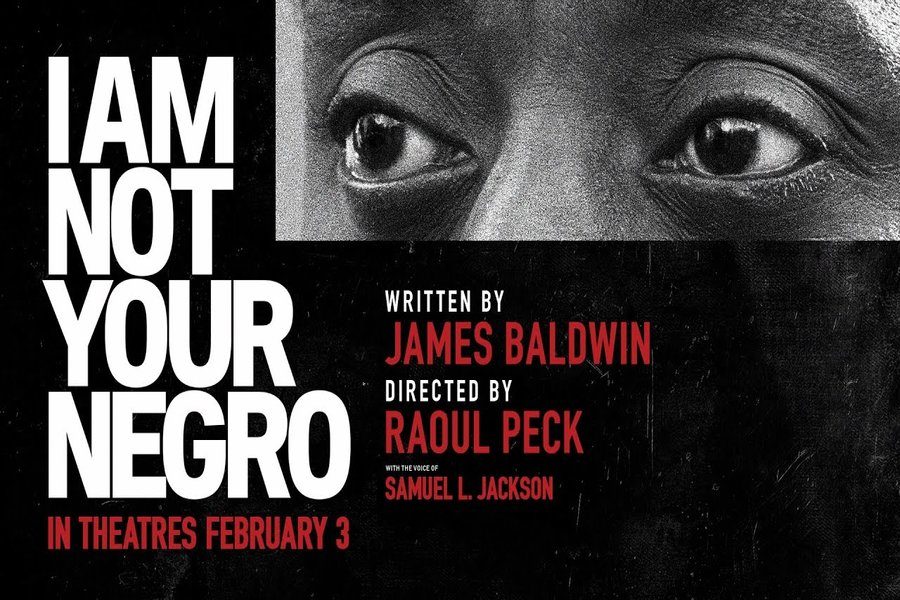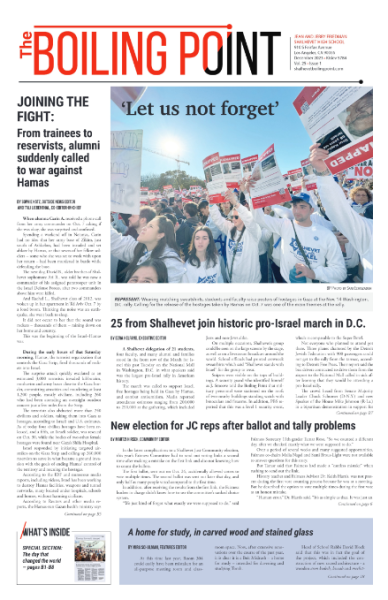In ‘I Am Not Your Negro,’ words of James Baldwin describe the past to illuminate the present
April 13, 2017
I Am Not Your Negro is a documentary film focusing on the views of acclaimed writer James Baldwin, 1924 – 1987, using his treatise, unfinished at his death, titled Remember This House. The book was aimed at explaining the struggles of black Americans using the lives of three of his friends, Martin Luther King, Malcom X and Medgar Evers, three major civil rights activist who were assassinated.
While Baldwin died before he could complete the novel, his ideas have now been expanded upon by the Haitian director Raoul Peck. The movie is built around the notes of Remember This House, which are narrated by the booming Samuel L. Jackson. Using film clips of speeches given by Baldwin and other civil rights figures, along with other images and film from the time, as well as current footage, Peck paints a vivid picture of the author’s ideology.
This makes the movie truly unique as a fusion of text and imagery, of film and literature. At times it can be impossible to differentiate between Baldwin’s manuscript and other writings — and at times it resonates so strongly with today that it doesn’t matter.
Baldwin himself is extraordinary because of his ability to explain his ideology with clarity and precision. Over the course of the film, viewers become accustomed to his style and familiar with his dialect. Footage of him speaking on talk shows and during lectures shows his virtuosity as he strives to convince his viewers of what he is trying to say.
While the movie is incredibly captivating and thought-provoking, it can be difficult at times to watch. It expertly exposes the indoctrination and lies that have led to American racism. There is some graphic imagery used to show this; including many dead or beaten bodies and explicit signs used by protesters.
Nevertheless, people should take the time to witness what Baldwin delivers.
The film is divided into chapters, each repre-
senting an aspect of his ideology. One is childhood and the beginning of indoctrination. He shows us what he believes being “white” actually means.
“In the case of the American Negro, from the moment you are born every stick and stone, every face, is white,” says Baldwin early in the film, in one of many quotes so famous it was easy to find on Google. “Since you have not yet seen a mirror, you suppose you are, too. It comes as a great shock around the age of 5 or 6 or 7 to discover that Gary Cooper killing off the Indians — when you were rooting for Gary Cooper — that the Indians were you!”
He brings the idea that being “white” is really a metaphor for power.
Another is the divergent history of racism in America. The United States, he explains as viscerally as he can, was built on slavery. Many important buildings and institutions exist only because of the brutal labor of slaves.
Americans live in two different worlds, Baldwin says — one where white people see themselves as the good guys, and no one disagrees, and the other where black people are killed in the streets and white people find a way to blame them.
He also talks about what he calls white American myths.
“The American Negro has the great advantage of having never believed the collection of myths to which white Americans cling,” says Baldwin. “That their ancestors were all freedom-loving heroes, that they were born in the greatest country the world has ever seen, or that Americans are invincible in battle and wise in peace… Negroes know far more about white Americans than that”
Black people, he says, became a lens through which white people could view themselves. The words “Give me liberty or give me death,” for example, have a completely different meaning than when a black person says them. Patrick Henry, of course, was seen as a brave hero, whereas African-Americans uttering the same words were made to be subversive villains seeking to bring America to its knees.
The tone of Baldwin’s writing reminds us all too well of racism in our own time. At a point in the movie, images of Tamir Rice, Trayvon Martin, Michael Brown and others are shown as Baldwin’s words are read. This raises the haunting question of whether we have made any progress since Baldwin’s day.
But the film is not merely a pessimistic think piece.
“I can’t be a pessimist because I’m alive,” Baldwin says during a talk on PBS. “To be a pessimist means that you have agreed that human life is an academic matter, so I’m forced to be an optimist. I’m forced to believe that we can survive whatever we must survive.”
Towards the end of the film, the author offers hope. As lynched bodies are shown hanging from a tree, Baldwin offers what is really the only possible road to a solution: “Not everything that is faced can be changed, but nothing can be changed if it is not faced.”
Overall, the movie is a fascinating depiction of Baldwin’s vision, written with eloquence and design. It would be hard to imagine a better statement on this topic.
And in 2017, it needs to be heard.














